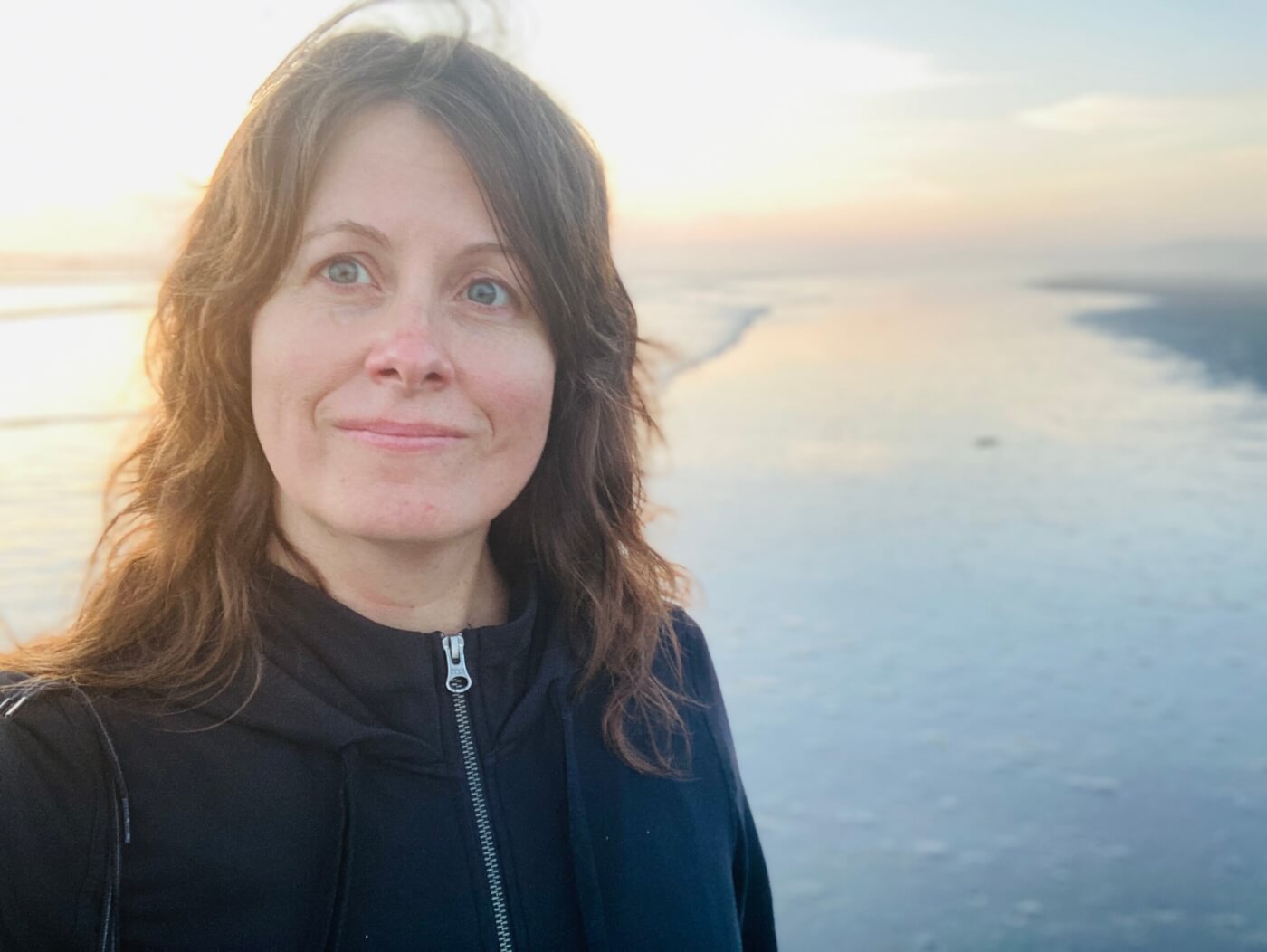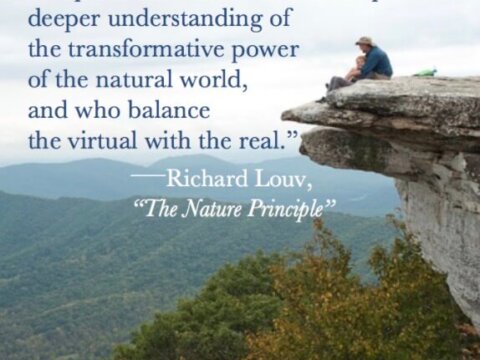BOUNDARY WATERS TRANSFORMATIONS: How time in nature can change the trajectory of students’ lives
PYC Arts & Technology High School in North Minneapolis, Minnesota, has a long history of thinking outside the box when it comes to supporting its students, many of whom have struggled in traditional school settings. An alternative high school, PYC offers one-on-one academic support, unprecedented access to the arts, and hands-on experience with music production, 3D printing and other sought-after technological skills.
Yet some of the best learning at PYC happens not on school grounds, but in the Boundary Waters Canoe Area Wilderness. The “BWCA,” for those in the know, is a federally designated wilderness area comprising over one million acres of dense forests, sprawling lakes and interconnecting streams and rivers along the U.S.-Canadian border between Minnesota and Ontario. It has been PYC tradition to take students on overnight trips to the BWCA since the early 1970s.
“I was really happy to get back there,” says Nate Christen, an English teacher at PYC. “We haven’t had a group go up for about three and a half years due to the pandemic.”
Christen co-led a group of nine students up to the Boundary Waters this past fall. The group spent three nights and four days sleeping in tents, paddling and portaging canoes, learning how to set up camp, building bonfires, cooking over an open flame, and — a trip highlight — stargazing.
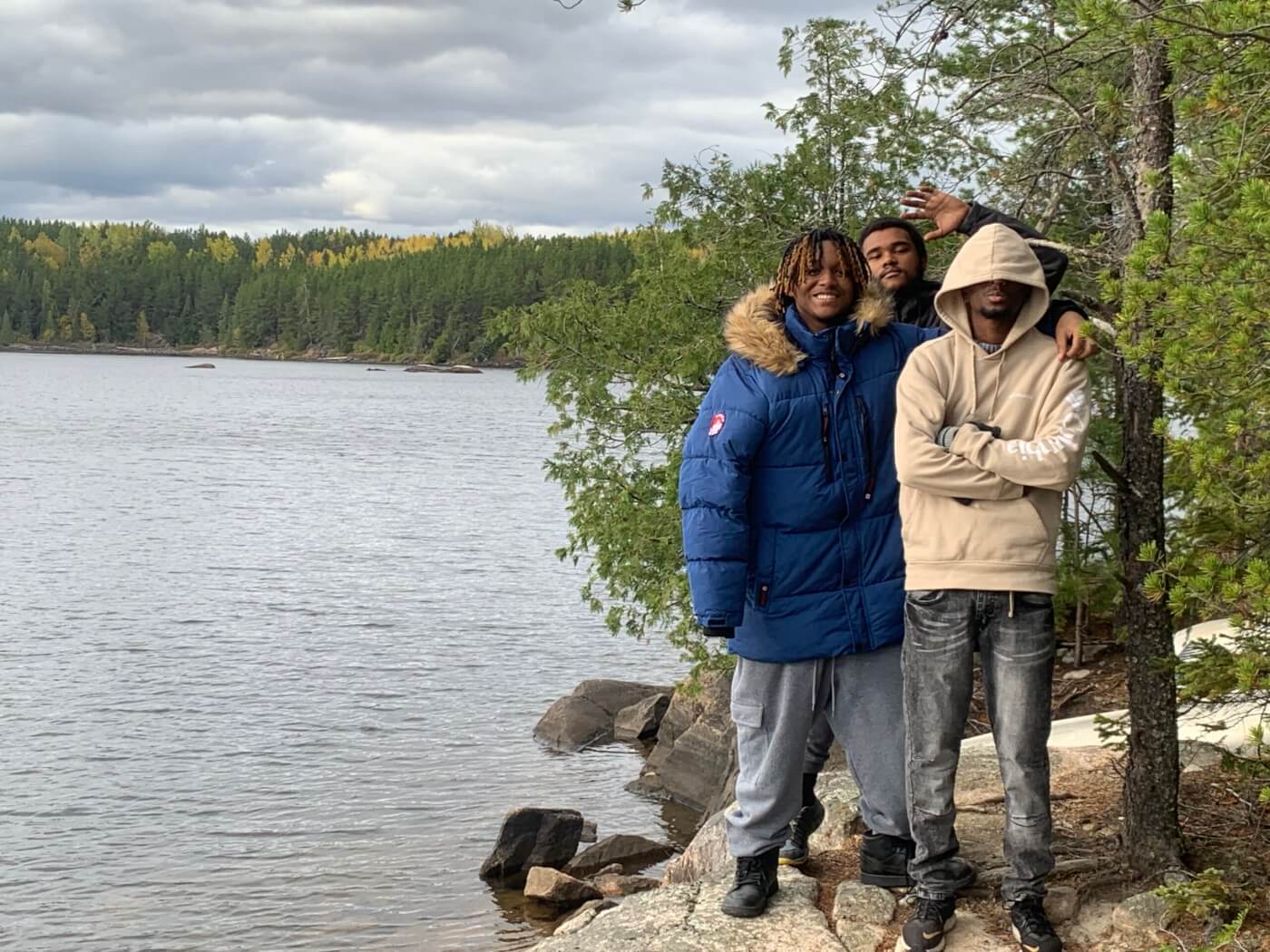
Stepping outside comfort zones leads to new friendships. Photo courtesy of PYC Arts & Tech.
“You can’t see the stars like that in the city,” says Sana’A, an 11th grader. “They were clear as day.”
Students also spent time reflecting and journaling on their experiences.
“I learned I can canoe and get along with other people pretty well,” Sana’A reports. “And that I should step out of my comfort zone more because it could be fun.”
“What I learned about myself is that I’m a quick learner,” says 12th grader Brandon.
Founded in 1954, PYC has always served students living in poverty. Over the years, that percentage has been rising. According to David Tarleton, PYC’s director of education, 95% of students qualify for a free or reduced lunch today, as compared to 70% in the 1970s. And whereas in the past, the student body was composed of all racial and ethnic groups, today the majority of students identify as African American, Native American or Hispanic.
None of the students on PYC’s most recent trip to the Boundary Waters had ever visited the wilderness. Only a few had been canoeing — a real-life reminder of what’s been termed “The Nature Gap,” which refers to a disparity in access to natural spaces and outdoor recreation, particularly affecting low-income communities, as well as Black, Indigenous and People of Color. This gap reflects both the unequal distribution of natural spaces and the inequitable experiences that members of these groups can sometimes face when engaging with the outdoors.
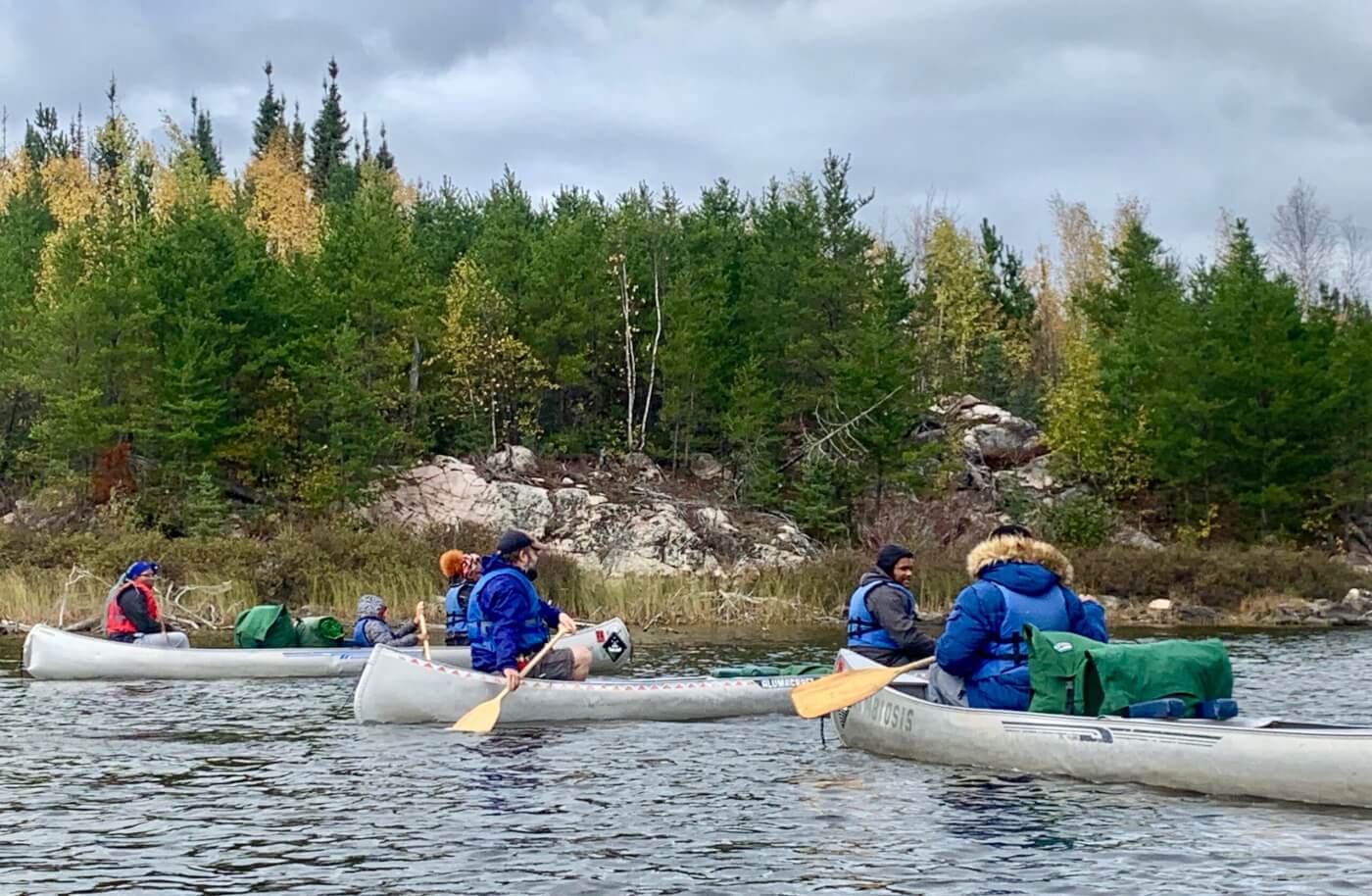
Portaging and paddling canoes was a first for many PYC students. Photo courtesy of PYC Arts & Tech.
The Boundary Waters, primarily accessible by canoe, is no exception to the Nature Gap. A 2012 U.S. Forest Service study on the BWCA found that approximately 97% of visitors identified as white. PYC’s program helps students overcome potential financial and institutional barriers to the BWCA, aiming to create an environment where students of all backgrounds feel supported and included in the wilderness.
“It’s a chance for students to experience things they haven’t had the opportunity to experience before,” says Tarleton, “to let down their guard, be real, open and honest, and gain new appreciation for themselves and each other as human beings. There’s a growth that happens.”
NATURAL BONDS
Chrislee Jacobs, a former social worker at PYC, led many BWCA trips during her time at the school and notes that a great deal of social-emotional learning takes place in the wilderness.
“Every trip is a different dynamic,” says Jacobs. ”You have students who may or may not know each other learning how to get along, cook together and sleep in a tent together. Emotions are high because students are away from home and don’t have their snacks or electronics. It’s a very intimate experience.”
Not only does the trip build trust between students and their peers, but it also strengthens relationships between students and staff.
“I remember the first time I took kids up during the winter,” says Tarleton. “It snowed — and when it snows up there, it gets really quiet. Well, I had a young man wake me up at two in the morning because he had never been out of the city and it was too quiet for him. He couldn’t sleep. It wasn’t too cold that night, so we sat out on the porch and looked up at the stars, located the Big Dipper, and we just talked. And he started realizing at a different level just how quiet “quiet” can be. It wasn’t something he’d ever experienced before. That was really powerful.”
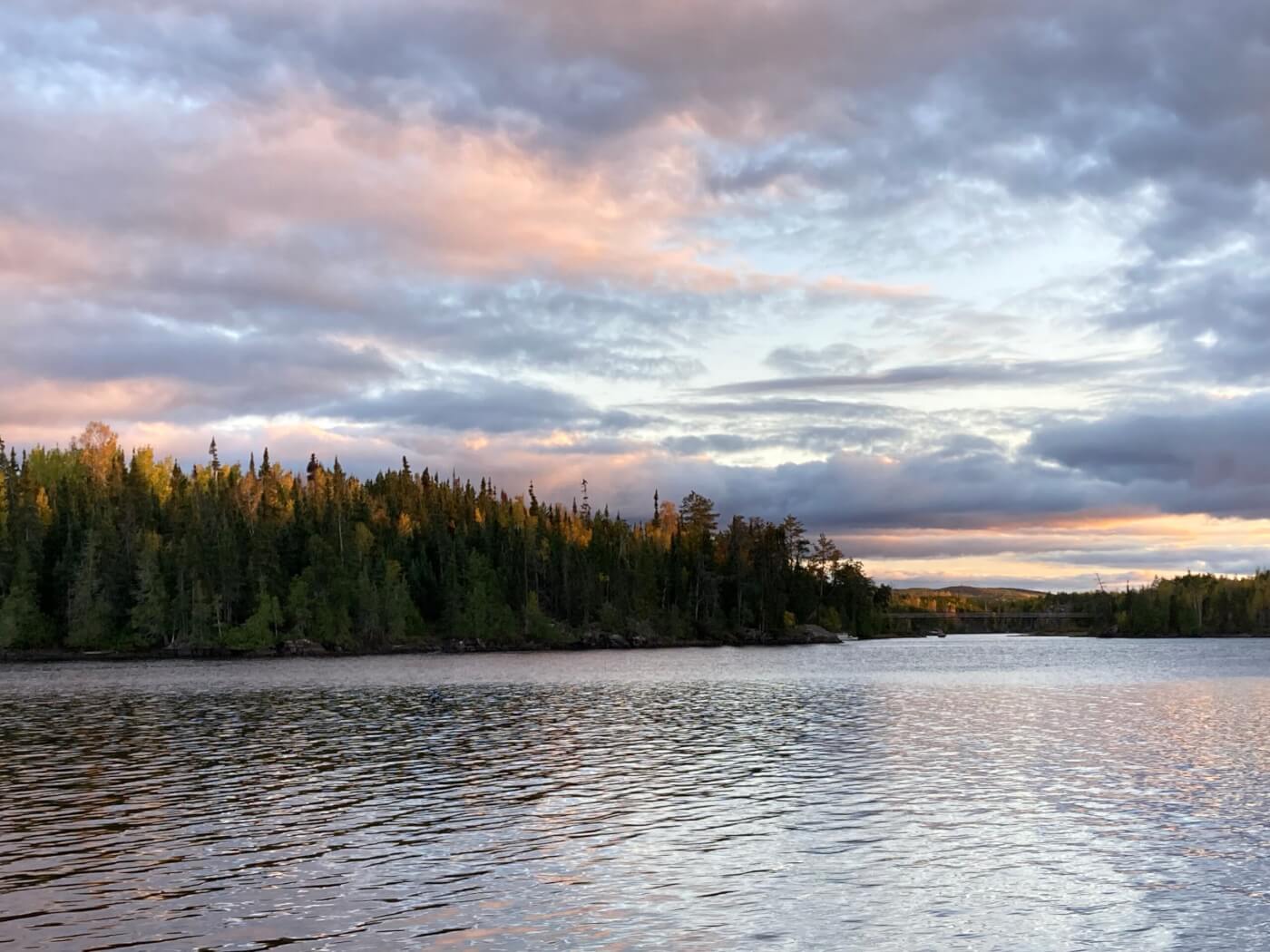
The sun sets over the Boundary Waters Canoe Area Wilderness. Photo courtesy of PYC Arts & Tech.
Back at school, students who go on the Boundary Waters trip are more likely to finish their school work than those who do not, observes Christen. And they’re more willing to revise it when teachers give them feedback.
“I can push them a little more because we’ve stepped out of our comfort zones together,” says Christen. “It feels more like we’re collaborating in school rather than me just giving them homework assignments to complete.”
Arianna, a senior at PYC, is one such student. This winter, after participating in the fall Boundary Waters trip, she had her best quarter yet, says Christen.
“It was my first time in the Boundary Waters. My first time camping, too,” says Arianna. “I liked it. It was refreshing. When I left, I felt like I’d accomplished something. And when we got back, I was just ready to work.”
A LASTING IMPACT
Swimming in a lake for the first time. Seeing new wildlife. Catching their first walleye. For many PYC students, the “firsts” they experience in the BWCA lead to greater trust in themselves and others, more self-confidence, and awareness of a broader world. Yet while the wilderness provides the setting, it’s the teachers and staff who create the right conditions for growth.
“Sense of community is huge,” explains Jacobs. “If you have a sense of community with other peers and adults, attendance improves, engagement improves — you feel like you belong.”
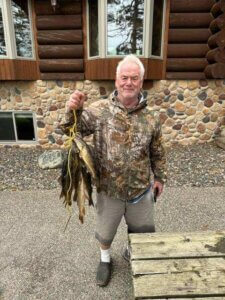
Nick Krier, pictured with a catch from a recent get-together with Barnett and Krier’s family. Photo courtesy of Nick Krier.
“The teachers at PYC really care,” says PYC alum Menelek Barnett, 44, noting that one of his PYC instructors and Boundary Waters trip leaders, Nick Krier, used to drive him to school to make sure that he made it every day. Barnett and Krier — Krier being a former PYC student himself — had a lot of heart-to-hearts during those car rides.
“Every morning we would discuss what I wanted in my life,” says Barnett. “Over the years, I would ask him questions, not only about fishing and hunting, but, ‘How did you get that house? How did you get that job?’ And he would walk me through the steps to go about doing it.”
It’s a relationship that has stood the test of time. Krier and Barnett still meet up once or twice a year to go hunting or fishing. “I still ask him for advice,” Barnett continues, “except now, I’m asking about retirement.”
Jacobs also still hears from students she worked with.
“I had a student — he’s an adult now in his thirties — who reached out five years ago to thank me and say how transformative those times were for him,” she says.
Jacobs encourages others working with youth to always be mindful of where the kids are coming from and to try to meet them where they are.
“Be mindful of the skill set that some kids may or may not have. If most of your kids have never been in the water, maybe waive swim test requirements,” says Jacobs. “If you’re serving food, maybe try to give the kids some of the things they’re used to so that they feel more comfortable. We want to show them that there’s a big world out there, but we also want to make sure they have a positive experience.”
Bobby Brooks, another PYC alum, credits PYC and the experiences he had in the Boundary Waters with helping him turn his life around.
“I was immediately taken by [the BWCA],” says Brooks. “I’d never seen anything like it. No cities. No concrete all over the place. No people. It was a place where humans hadn’t groomed everything.”
Brooks is now an avid hunter and fisherman. “Now that I’m older, I’m able to fall back on the positive influences I’ve had,” he reflects. “Going to the Boundary Waters opened a whole new world for me.”
PYC Arts & Technology High School
Research Digest: Inequitable access to nature
Team Wilderness: Connecting Jersey City Youth to the Outdoors, a Finding Nature News article
The Adventure Gap: Changing the Face of the Outdoors, by James Edward Mills
-
Network News
POLICY UPDATE: Policy and advocacy for the children and nature movement
-
Voices
Binoculars, bald eagles and my journey as a Black birder
-
Richard Louv
THE WONDER BOWL: Ten Spring and Summer Nature Activities for Kids and Adults
-
Network News
Minneapolis Spotlight: The promise and possibilities of parks for youth
-
Voices
Why nature is my motherhood ally



